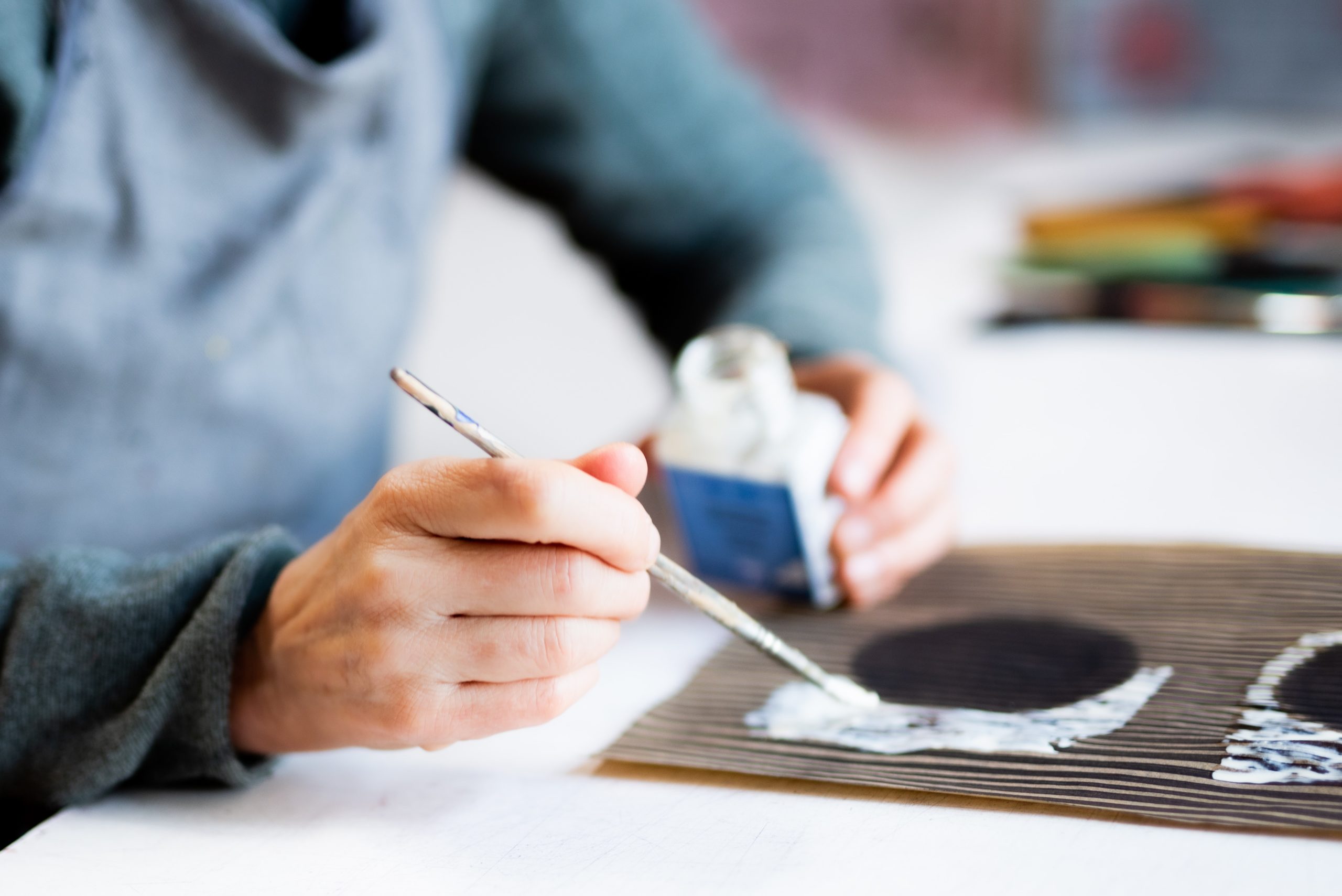Caring for someone with dementia is a journey filled with both challenges and moments of deep connection. As communication shifts and words may not come as easily, caregivers often look for new ways to engage and maintain meaningful relationships with their loved ones. Art and creativity offer a powerful way to connect—beyond words, beyond memory, beyond the limits of dementia.
Engaging in creative activities can reduce anxiety, encourage self-expression, and bring moments of joy. Best of all, you don’t need to be an artist to make it work. Whether it’s painting, music, collage, or simply talking about art, the goal is to be present and create a shared experience.
Here are four simple and meaningful ways caregivers can use art to connect with individuals living with dementia:
1. Painting & Drawing: Expression Without Words
Art can be a window into a person’s emotions, thoughts, and memories—even when verbal communication becomes difficult. Encourage your loved one to paint or draw freely, without worrying about what it “should” look like. Simple landscapes, abstract shapes, or just the soothing motion of a brush on paper can be a grounding and expressive experience.
💡 Caregiver Tip: Engage in conversation about the colors and shapes they create. “I love how bright this red is—what do you think of when you see this color?” This keeps the interaction open-ended and pressure-free.

2. Music & Art: Let the Rhythm Inspire Creativity
Music has a unique way of unlocking memories and emotions. Pairing it with art can make for an even richer experience. Try playing familiar, soothing music in the background while painting or drawing. You might notice how the tempo influences movement—faster strokes with upbeat music, slower, more fluid movements with calming melodies.
Another idea? Have your loved one create art inspired by music. Play a song and ask them to draw or paint what it makes them feel. Does the song remind them of a place? A memory? A specific color? This fusion of music and art can be a deeply personal way for them to express themselves.
💡 Caregiver Tip: Choose music from their past—songs they loved in their youth, church hymns, or classic tunes they might recognize. Familiar music can evoke strong emotions and help spark moments of connection.
3. Nature & Collage: Engaging the Senses
Collage-making is a tactile and low-pressure art activity, perfect for engaging someone with dementia. Take a short walk outside and collect leaves, flowers, or interesting textures. Then, bring them back inside and create a collage. Use crayons or pastels to do leaf rubbings, or simply arrange the pieces on a page for a nature-inspired composition.
Another option? Cut out images from magazines and create a memory collage. Ask your loved one to choose images that stand out to them—whether it’s a familiar-looking place, an old-fashioned dress, or a picture of a dog that reminds them of one they once had. This can spark conversation, reminiscence, and emotional connection.
💡 Caregiver Tip: If your loved one has difficulty making choices, guide them gently by offering just a couple of images at a time and asking, “Which one do you like best?”
4. Become an Art Critic: Exploring Art Together
You don’t have to create art to enjoy it! Looking at and discussing art together can be just as engaging. Browse through an art book, visit a museum (in person or virtually), or even look up famous paintings online. Ask open-ended questions to spark conversation, such as:
🖼️ “What do you see in this painting?”
🎨 “How does this artwork make you feel?”
🖌️ “What do you notice first when you look at it?”
📖 “What story do you think this painting is telling?”
These kinds of questions encourage imagination, personal expression, and cognitive engagement, no matter where someone is in their dementia journey. Plus, it’s a simple way to spend time together and share a moment of creativity without any pressure to “perform.”
💡 Caregiver Tip: If your loved one struggles to answer, simply share what you notice first. Your own observations might help spark their thoughts!
Why Art Works in Dementia Care
Art is about being in the moment—not about remembering the past or planning the future. That’s why it’s such a powerful tool for dementia caregivers. Whether through painting, music, collage, or simply looking at art together, creativity allows for expression, connection, and a sense of self that transcends memory loss.
At the end of the day, it’s not about making something beautiful. It’s about the experience you share. It’s about sitting side by side, watching colors blend, hearing a familiar tune, or seeing a spark of recognition in their eyes.
Try one of these activities this week and see where it takes you. You might just find that art opens doors to moments of joy, laughter, and connection—without saying a single word.
Have you used art to connect with a loved one living with dementia? I’d love to hear your experience—drop a comment or send me a message!
Recent Comments